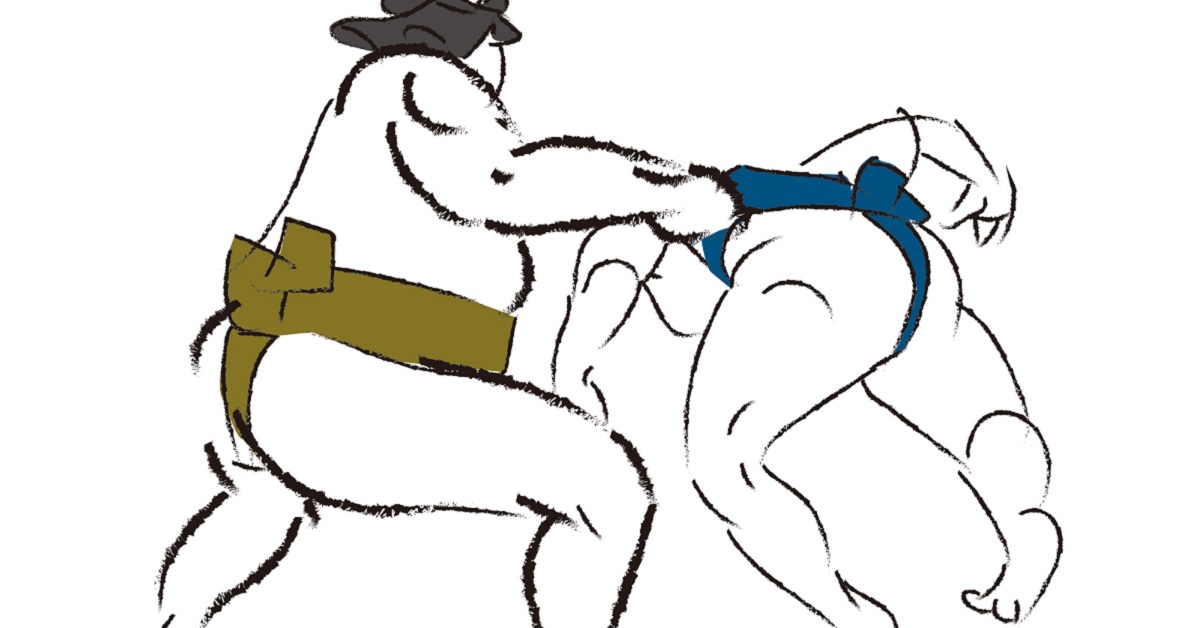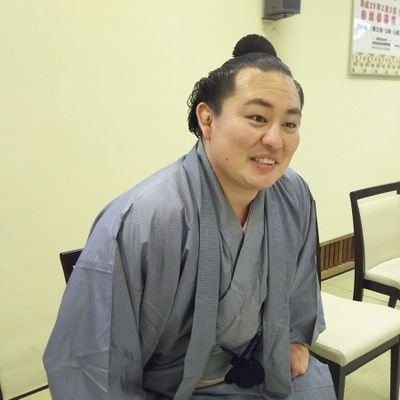In professional sumo, there is an award that honors the beauty of technique rather than the number of victories — the Ginō-shō, or Technique Prize.
It is given only to wrestlers who display exceptional skill, intelligence, and dignity on the dohyo.
For anyone wishing to understand the deeper essence of sumo, the Ginō-shō is the key to appreciating its true artistry.
- What Is the Ginō-shō?
- The Three Special Prizes
- Selection Criteria for the Ginō-shō
- Why the Ginō-shō Is So Highly Respected
- Notable Recipients of the Ginō-shō
- Traits of Wrestlers Likely to Win the Ginō-shō
- Foreign Wrestlers and the Ginō-shō
- The Impact of Winning the Ginō-shō
- What the Ginō-shō Reveals About Sumo
- Conclusion
What Is the Ginō-shō?
The Ginō-shō (技 能 賞), or Technique Prize, is one of sumo’s three special awards, presented to the wrestler who demonstrates the highest level of technical skill and creativity during a tournament.
Though sumo appears to be a contest of strength, it is also a battle of timing, balance, and mental sharpness. The Ginō-shō celebrates wrestlers who display such “craftsmanship” in motion.
In a sport often dominated by larger and stronger rikishi (wrestlers), this prize honors those who overcome size disadvantages through technique, agility, and intelligence.
It represents the purest spirit of sumo—the mastery of technique over brute force.
The Three Special Prizes
The Ginō-shō is one of the “Sanshō” (Three Prizes) awarded at the end of each Grand Sumo Tournament. Each prize has its own focus and meaning, as summarized below.
| Award Name | Evaluation Focus | Typical Recipients |
|---|---|---|
| Shukun-shō (Outstanding Performance Prize) | Defeating higher-ranked opponents | Lower-ranked wrestlers who beat top rikishi |
| Kantō-shō (Fighting Spirit Prize) | Fighting aggressively and achieving many wins | Energetic wrestlers with strong momentum |
| Ginō-shō (Technique Prize) | Skill, creativity, and the beauty of sumo technique | Wrestlers admired for their artistry and precision |
While the other prizes often reflect results or fighting spirit, the Ginō-shō recognizes the quality of technique and strategic thinking.
Even without a championship, a wrestler who shows brilliant skill and clever tactics can receive this distinguished award.
Selection Criteria for the Ginō-shō
The recipient of the Ginō-shō is chosen on the final day of each tournament by a committee composed of journalists from the Sumo Press Club.
Although the exact criteria are not officially defined, three major elements are consistently valued:
Variety of Techniques
Wrestlers who can use multiple kimarite (winning techniques) effectively are highly rated.
Those who rely only on pushing are less likely to win; versatility—using throws, trips, and shifts—is essential.
The ability to surprise both opponent and audience with sharp, elegant movements often decides the award.
Strategy and Adaptability
The Ginō-shō also rewards wrestlers who show strategic intelligence.
Those who analyze opponents’ habits, adjust their stance, or change their grip mid-bout demonstrate high-level thinking.
Defeating stronger opponents through timing and anticipation is a classic hallmark of a Technique Prize recipient.
Beauty and Dignity
Sumo is not just a sport—it is a cultural ritual rooted in respect and formality.
Thus, the Ginō-shō values not only precise execution but also graceful movement and composure.
How a wrestler behaves on and off the ring—the dignity of every motion—is part of what makes them worthy of this award.
Why the Ginō-shō Is So Highly Respected
The Ginō-shō is revered because it embodies the philosophical side of sumo.
Sumo is not simply a contest of force; it is a disciplined art that values the harmony between strength, skill, and spirit.
The prize highlights wrestlers who combine all three through their technique.
Spectators feel deep emotion when they see a smaller rikishi defeat a stronger opponent with a perfectly timed throw or reversal at the edge of the ring.
Moments like these express the aesthetic heart of sumo—the elegance of skillful victory—and the Ginō-shō honors precisely that.
Notable Recipients of the Ginō-shō
Throughout history, many great wrestlers have won the Technique Prize, each leaving a unique impression on fans.
| Wrestler | Stable | Signature Techniques | Characteristics |
|---|---|---|---|
| Chiyonofuji | Kokonoe Stable | Underarm throw, backward body drop | Overcame size disadvantage with superior technique |
| Takanohana | Futagoyama Stable | Scoop throw, frontal force-out | Combined mental strength and technical perfection |
| Kyokutenhō (Asashōryū’s senior) | Tomozuna Stable | Slap down, ring edge reversals | One of the first foreign-born “technique masters” |
| Endō | Oitekaze Stable | Arm throws, body drops | Admired for textbook sumo form and grace |
| Tochiōzan | Kasugano Stable | Throws, frontal attacks | Known for elegance and composure in movement |
These wrestlers share two key traits: calm under pressure and inventive technique.
Their sumo was not about brute power but about reading their opponent and executing the perfect move at the perfect time.
Traits of Wrestlers Likely to Win the Ginō-shō
The Ginō-shō is not given lightly.
Recipients usually possess several common characteristics that distinguish them from others:
| Trait | Description | Example |
|---|---|---|
| Wins through skill rather than size | Uses agility and timing to counter larger opponents | Chiyonofuji |
| Wide repertoire of moves | Masters various techniques, flexible in approach | Known for throw-based style |
| A sense of aesthetics | Displays etiquette and refined movement | Earns audience admiration |
| Ability to challenge higher-ranked wrestlers | Beats top rikishi through precise execution | Enhances recognition |
In short, the award goes to those who embody the artistic side of sumo—a balance of physical control, intelligence, and elegance.
Foreign Wrestlers and the Ginō-shō
For foreign rikishi, the Ginō-shō carries deep symbolic meaning.
Winning it proves that they have not only adapted to Japanese sumo but also mastered its cultural and technical essence.
Many Mongolian wrestlers, such as Kyokutenhō and Hakuhō, have been praised for their fluid body control and intuitive timing.
Their ability to blend strength with refined technique inspired both fans and fellow wrestlers.
Through them, the Ginō-shō became a bridge between cultures—a message that sumo’s art transcends nationality.
The Impact of Winning the Ginō-shō
Earning the Ginō-shō is both an honor and a responsibility.
It motivates wrestlers to refine their craft even further and often marks a turning point in their careers.
It can also raise their popularity among fans and inspire the next generation to focus on skill over raw power.
| Type of Impact | Description | Example |
|---|---|---|
| Technical Growth | Encourages wrestlers to keep improving their skills | Many evolve further after receiving it |
| Fan Recognition | “Beautiful sumo” wins audience admiration | Boosts reputation and fan base |
| Cultural Influence | Promotes technical awareness among younger rikishi | Elevates the overall artistry of sumo |
Thus, the Ginō-shō not only honors individuals but also raises the standard of the entire sumo world.
What the Ginō-shō Reveals About Sumo
The Ginō-shō reminds us that sumo is both a sport and an art form.
Every motion on the dohyo—every grip, throw, and stance—reflects years of disciplined training and a philosophy of respect.
It embodies the harmony of “Shin-Gi-Tai” (spirit, technique, and body) that defines true sumo mastery.
The fleeting instant when a wrestler executes a flawless throw and the crowd gasps in awe—that moment is the soul of sumo.
The Ginō-shō honors precisely those moments, celebrating the art of victory through beauty.
Conclusion
The Ginō-shō stands as the ultimate recognition of technical excellence and artistry in sumo.
It celebrates not just victory, but the intelligence, discipline, and elegance behind it.
For both newcomers and seasoned fans, understanding this prize reveals sumo’s deeper layers—its beauty, its philosophy, and its humanity.
When watching a bout, pay attention not only to who wins but how they win.
Notice the flow of movement, the subtle timing, and the creativity that defines each wrestler’s style.
Through this perspective, the world of sumo opens up as a form of living art, and the Ginō-shō remains its shining symbol of perfection.





コメント